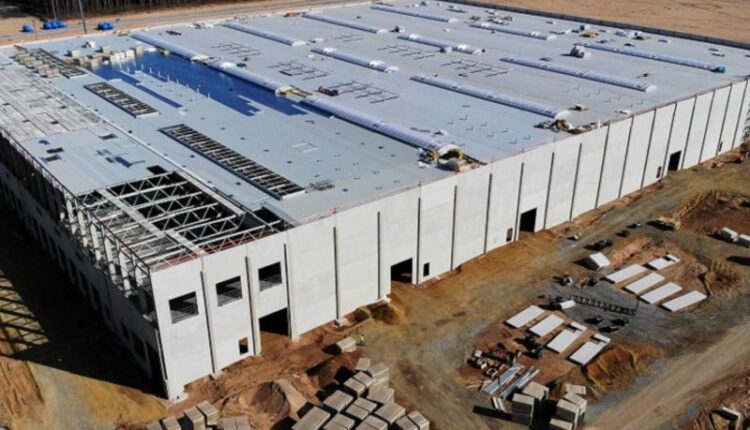The agency has previously said that it cannot say when that will be. However, every project that has obtained preliminary permits in Brandenburg eventually received the final ok.
But that is not discouraging environmentalists from continuing to oppose the plant. Last week Gruene Liga and Nabu submitted an injunction to a German court against provisional building permits for site, in the latest attempt to ensure Tesla is adhering to environmental laws.
The battery cell plant
Tesla’s construction plans had to be fully resubmitted earlier this month to reflect the addition of battery cell production to the site, costing valuable months.
The Gruenheide plant comprises several units to handle component manufacturing and final vehicle assembly, including a press shop, foundry and body production.
It also includes a water recycling facility, a local fire brigade as well as a depot to ensure more efficient transport of components and other goods. Under the plans, the site’s power needs are to be met via local renewable energy sources.
But adding battery cell production meant the company had to tweak and refile the whole application. Based on the most recent version, the plant will have the capacity to produce 500 million cells totaling 50 gigawatt hours (GWh) a year.
That’s more than the 40 GWh facility rival Volkswagen plans to set up about 180 miles west in Salzgitter near its home base.
Who supports the factory?
Tesla’s move is seen as a major boost to eastern Germany, which has struggled with high unemployment rates and difficulties to attract large industrial firms.
Once fully up and running, the plant, which Tesla said will be the “most advanced high-volume electric vehicle production plant in the world,” is expected to create 12,000 jobs and have a capacity of up to 500,000 cars a year.
“We’re in favor of a shift towards emission-free mobility and the cars needed to achieve that must be built somewhere,” said Ralf Schmilewski, a member of the Greens Party in Gruenheide’s neighboring town Erkner.
He said Tesla’s plans also address a demographical issue, which has seen younger generations to leave the structurally weak area in their desperate search for jobs.
“Now they have a perspective and don’t have to move.”
What’s next?
Until mid-July, members of the public can sift through the roughly 11,000 pages of Tesla’s application documents, including blueprints, tables and calculations, in the town hall of Gruenheide, the third time they have been put on display.
As part of the process, anyone can file objections until Aug. 16, before the Brandenburg environmental agency decides whether a public discussion should take place on Sept. 13.
When the documents were last made available publicly, in 2020, more than 400 objections were raised.
After that there is no clear timeline. At some point the agency is expected to grant final approval – but when is anyone’s guess.


